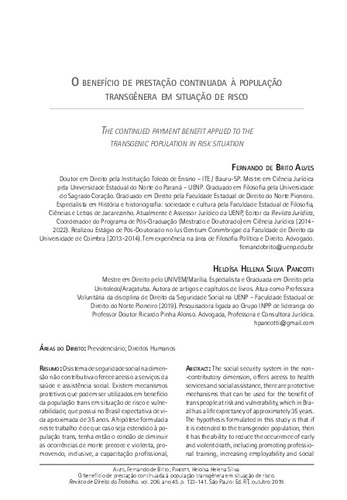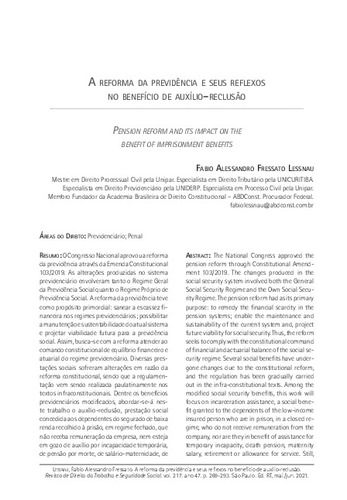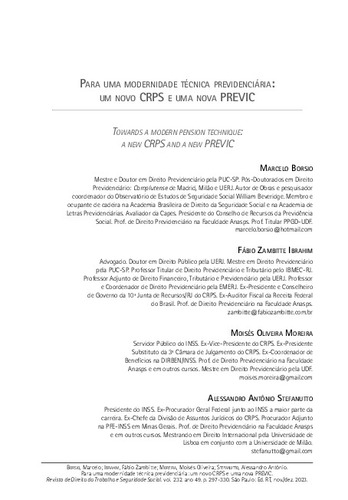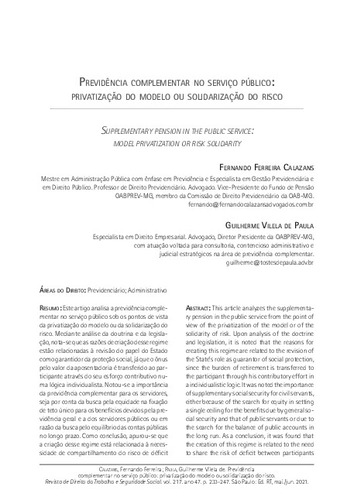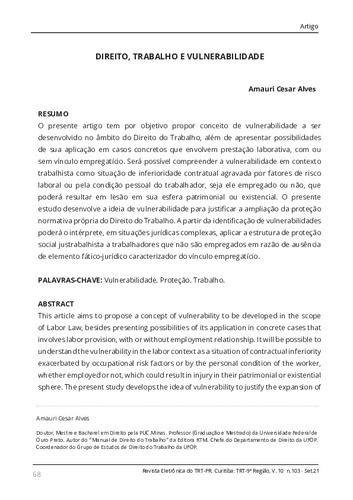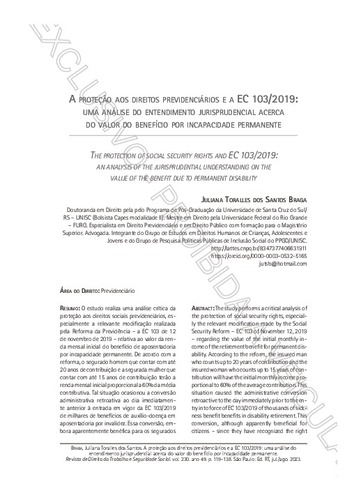Artigo de periódico
O benefício de prestação continuada à população transgênera em situação de risco
| dc.contributor.author | Alves, Fernando de Brito | |
| dc.contributor.author | Pancotti, Heloísa Helena Silva | |
| dc.date.accessioned | 2019-11-28T21:37:07Z | |
| dc.date.available | 2019-11-28T21:37:07Z | |
| dc.date.issued | 2019-10 | |
| dc.identifier.citation | ALVES, Fernando de Brito; PANCOTTI, Heloísa Helena Silva. O benefício de prestação continuada à população transgênera em situação de risco = The continued payment benefit applied to the transgenic population in risk situation. Revista de direito do trabalho, São Paulo, v. 45, n. 206, p. 123-141, out. 2019. | pt_BR |
| dc.identifier.uri | https://hdl.handle.net/20.500.12178/165413 | |
| dc.description.abstract | [por] O sistema de seguridade social na dimensão não contributiva oferece acesso a serviços da saúde e assistência social. Existem mecanismos protetivos que podem ser utilizados em benefício da população trans em situação de risco e vulnerabilidade, que possui no Brasil expectativa de vida aproximada de 35 anos. A hipótese formulada neste trabalho é de que caso seja estendido à população trans, tenha então o condão de diminuir as ocorrências de morte precoce e violenta, promovendo, inclusive, a capacitação profissional, aumentando a empregabilidade e a inclusão previdenciária. Para tanto, analisaremos, sob a ótica biopsicossocial, a condição de incapacidade de longa duração autorizadora da concessão do benefício assistencial, diante da Teoria do Estigma de Goffman, tornando possível o pleito do BPC em favor da população trans em situação de risco e vulnerabilidade. | pt_BR |
| dc.description.abstract | [eng] The social security system in the non-contributory dimension, offers access to health services and social assistance, there are protective mechanisms that can be used for the benefit of trans people at risk and vulnerability, which in Brazil has a life expectancy of approximately 35 years. The hypothesis formulated in this study is that if it is extended to the transgender population, then it has the ability to reduce the occurrence of early and violent death, including promoting professional training, increasing employability and social security inclusion. In order to do so, we will analyze from the biopsychosocial point of view the condition of long-term incapacity authorizing the granting of the welfare benefit, in view of Goffman’s Stigma Theory, making possible the BPC’s plea to the transgender population at risk and vulnerability. | pt_BR |
| dc.description.tableofcontents | A incapacidade social para o trabalho -- Dos requisitos legais | pt_BR |
| dc.language.iso | pt_BR | pt_BR |
| dc.relation | Brasil. Lei orgânica da assistência social (1993) | pt_BR |
| dc.relation.ispartof | Revista de direito do trabalho: vol. 45, n. 206 (out. 2019) | pt_BR |
| dc.relation.uri | https://www.lexml.gov.br/urn/urn:lex:br:federal:lei:1993-12-07;8742 | pt_BR |
| dc.subject | Seguridade social | pt_BR |
| dc.subject | Direitos dos grupos vulneráveis | pt_BR |
| dc.subject | Transgênero | pt_BR |
| dc.subject | Vulnerabilidade | pt_BR |
| dc.title | O benefício de prestação continuada à população transgênera em situação de risco | pt_BR |
| dc.title.alternative | The continued payment benefit applied to the transgenic population in risk situation | pt_BR |
| dc.type.genre | Artigo de periódico | pt_BR |
| dc.identifier.rvbisys | 001161036 | |
| dc.relation.ispartoflink | https://hdl.handle.net/20.500.12178/164595 | pt_BR |
Ce document figure dans la(les) collection(s) suivante(s)
-
Artigos9539


